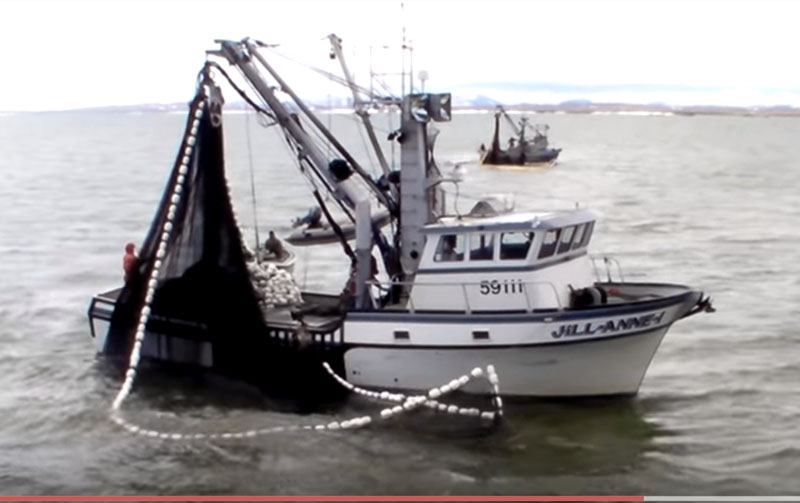
Alaska Department of Fish and Game (ADF&G) biologists plan to begin aerial surveys of the Togiak district herring fishery in mid-April, weather permitting, with regular fishery updates to be communicated directly to processors.
Based on a forecast of a 136,756-ton biomass, 27,351 tons of herring will be available for harvest.
The breakdown is 1,500 tons of spawn-on-kelp, 1,810 tons of Dutch Harbor food and bait, and 24,042 tons of Togiak sac roe herring, of which the purse seine fleet gets 16,829 tons or 70 percent, and gillnetters get 7,212 tons, or 30 percent.
Spawn-on-kelp (kazunoko kombois), a specialty seafood product, is sold primarily in the Japanese gift markets in the Tokyo region.
ADF&G managers at Dillingham, Alaska, said the sac roe fisheries will again be managed for maximum product quality through long openings to allow permit holders to make smaller sets and harvest the highest quality fish. Preseason polls indicate that four processors will participate in the Togiak sac roe herring fishery with three gillnets and 19 purse seine vessels.[xyz-ihs snippet=”adsense-body-ad”]For the last decade, ADF&G has opened the fishery as soon as the threshold biomass of 35,000 tons has been documented and plans to use this strategy again this year.
Meanwhile in Sitka, Alaska, herring fishery aerial surveys are already underway.
The Sitka Sound sac roe herring fishery is currently on two-hour notice.
A second herring aerial survey for the Ketchikan area herring fishing was held on March 20 in the Craig area, amidst gusty winds, choppy seas and snow squalls, with no spawn or herring observed. ADF&G said skiff surveys would be conducting daily skiff surveys throughout the Craig fishery and spawning event.
Fishermen’s News Online grants permission to the Alaska Native News to post selected articles. Read More at: Fishermen’s News Online.








